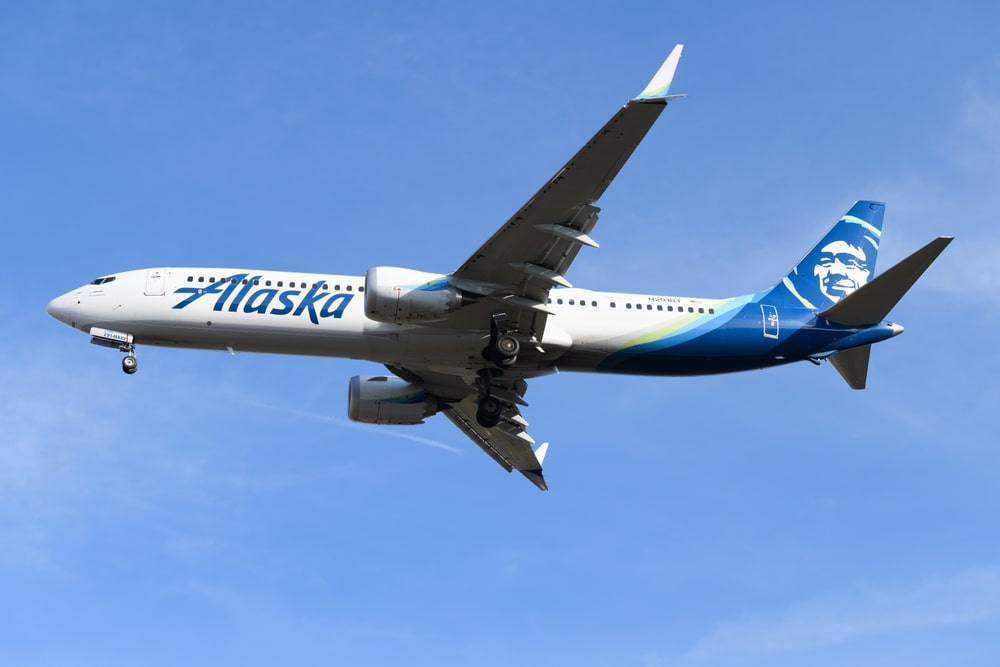
The Federal Aviation Administration (FAA) ordered a temporary grounding of 171 Boeing 737 MAX 9 jets installed with the same panel that caused a mid-air blowout on an Alaska Airlines jet on Friday.
The eight-week-old Alaska Airlines jet was forced to make an emergency landing after the door plug tore off the left side of the jet following takeoff from Portland, Oregon as it headed to Ontario, California.
“They will remain grounded until the FAA is satisfied that they are safe”, the agency said in a statement over the weekend.
The jet had reached 16,000ft (4,876m) before it had to turn back and land safely with all 171 passengers and 6 crew according to the BBC.
After an initial search for the missing door plug, it was recovered on Sunday in the backyard of a Portland School Teacher. The plug will be used in the investigation carried out by the US authorities.
Various US media outlets reported that the force of the 737 MAX 9 decompression, because of the door plug flying off, had such a force that it blew open the cockpit door.
Of the 171 planes grounded, 144 are operating in the United States according to Cirium.
Alaskan Airlines cancelled 170 flights, affecting nearly 25,000 customers, with the company acknowledging that travel disruptions will be expected to last until midweek.
United Airlines cancelled 230 flights on Sunday, which was 8% of all scheduled flights after grounding 79 of its 737 MAX 9 aircraft.
In a statement, United said that they had carried out inspections required by FAA on some of the aircraft.
The extra exit door is typically installed by low-cost airlines using more seats that required additional evacuation routes. From a passengers’ view, the area looks like a normal window seat.
Sometimes, these doors can be plugged onto jets with fewer seats. This was the case with Alaska Airlines.
Jennifer Homendy, chair of National Transportation Safety Board (NTSB), in remarks picked up by Reuters, said that the auto pressurisation fail light had illuminated on the same Alaskan Aircraft on previous flights on December 7, Jan 3 and Jan 4.
Alaskan Airlines had made the decision following these warnings to restrict aircraft from making long flights over water to Hawaii so that it could return to back to an airport, Homendy added.
This is not the first time that a Boeing MAX aircraft has been grounded. In 2019, global aviation authorities grounded all MAX aircraft following crashes in Ethiopia and Indonesia resulting in the death of 346 people. The grounding lasted for 20 months due to issues with the Maneuvering Characteristics Augmentation Software (MCAS), a then new feature of 737 MAX 8.
The incident comes at a crucial moment for Boeing as it seeks regulatory approval for the MAX 7 and MAX 10, both designed to compete with larger Airbus models, Reuters reports.
Boeing has delivered 214 of 737 Max 9, comprising 15% of the 1,300 MAX aircraft in service according to Reuters.
Various US media outlets have reported from sources close to the investigation that neither the FAA nor Boeing have agreed to the criteria for checks on the grounded aircraft. Therefore, this means that airlines have not received detailed instructions yet as to proceed with their checks.
The 737 MAX 9 plane can seat up to 220 passengers, making it Boeing’s largest single aisle plane. The plane includes an optional extra door to allow for the approved number of evacuation paths, should an aircraft choose to install the maximum number of seats.
Further sources have said that while the plug was manufactured and installed by Spirit AeroSystems, a Kansas-based company, Boeing has a potential role in what is a complex two-tier process of installation, according to Reuters.
Most airlines typically opt for a looser layout based on a smaller number of seats, therefore not requiring the additional door which adds weight and reduces cabin flexibility. Therefore, the door is deactivated before delivery using a “plug”.
Spirit builds fuselages for 737s and sends them by train with a special assembly door “rigged”, meaning that they are fitted but not completed.
Once they arrive at Boeing’s plant in Renton, Washington, Boeing typically removes this pop-out door, using the gap to feed in cabin equipment. The plane is slotted back and the installation is completed. The hull is pressurized to 150% to make sure everything is working correctly.
Industry experts say that door plugs have been used to help adapt aircraft for years, but the investigation will look at structural issues to assess whether manufacturing or assembly played a role in the incident.
The Insurer magazine cited aviation sources, which indicated that whether this grounding heralds a claim will depend on how long it takes to complete the inspections. The planes would typically need to be grounded for weeks or months, rather than days, to trigger any major impact. At this stage it seems that the grounding is expected to last until at least mid-week.
An extended grounding may also place further pressure on an all-risks market that has seen some airlines renew flat to down at Q4 2023 renewals.
Significant competition in the all-risks market has prevented primary insurers from pricing in reinsurance rate hikes, which sources suggest is likely to place pressure on margins in 2024.

Related Articles
Aviation
Aviation
Aviation